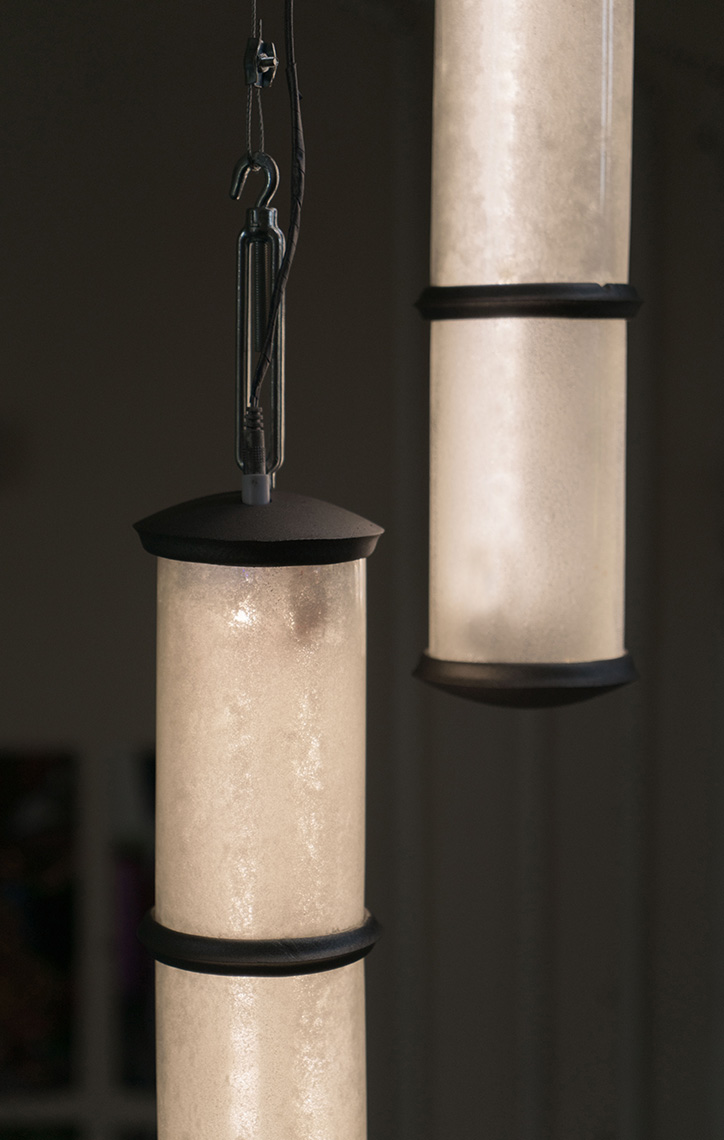BOISBUCHET RESIDENCY PROGRAMME
PABLO BOLUMAR
SEASON 2022

Pablo Bolumar Plata (Valencia, 1996) was the designer selected for the first edition of the edition of the residency programme co-organised by Acción Cultura España and Domaine de Boisbuchet. The collaboration agreement between the two institutions made it possible to send a Spanish designer or architect – or an or a resident in Spain – to Domaine de Boisbuchet for a period of nine weeks.
Pablo Bolumar is a Spanish designer specialising in the transformation of semi-finished materials into contextual pieces of functional art through assembly and narrative. His particular approach to the discipline of design is characterised by a rational use of post-industrial resources. His designs integrate disassembly, repair and biodegradability and employ an expressive, contemporary language. His work has been recognised by AD magazine in 2021.



For the residence at Domaine de Boisbuchet Pablo proposed a lighting project in which to apply the principles of design for circularity, a theme he intends to develop in depth during his master’s degree. He was therefore particularly interested in to study the material flows of the Domaine during its high season of activity, when the concentration of people and resources, and therefore of waste, is higher.
During the stay at Boisbuchet, Pabló explored the material flows of the Domaine and applied design principles for circularity to lighting installations. During the 9-week residency, he combined material gathering with material experimentation in order to develop a series of lighting installations. First, he traced the flow of materials and started collecting samples, mainly from the waste materials from each of the workshops. In these nine weeks Pablo developed three main projects.
Since 2019, Pablo has been experimenting with the use of beeswax as a material, which he uses for waxing fabrics, with different levels of saturation. Working in Boisbuchet, where there is a beekeeping tradition, has allowed him to study the rigidity and translucency of this new biocomposite material. Used as a light diffuser, he has used it to create an interesting collection of luminaires, which he presented in the woods of the Domaine.For the first project,
After experimenting with the leftover apple juice bottles (juice made from the apples from the orchard of the Domaine) for several weeks in the workshop (cutting them, drilling them, boring them…) Pablo found a way to use them to create a large chandelier for the Château de Boisbuchet, which includes elements inspired by the shapes and geometries of the historic balusters of this nineteenth-century building. To connect the glass elements he experimented with various materials, including cast and cast aluminium as well as resin worked with 3D printers.
The third lighting project took advantage of the characteristics of the work pavilion where Pablo set up his studio during his nine-week residency: the Paper Pavilion, built with students in 2001 by Shigeru Ban, winner of the Pritzker Architecture Prize. The aim of these luminaires was not only to improve the lighting of this space, but also to rethink its use, as they allow it to be converted into a greenhouse and used throughout the year as an annex to the vegetable garden in which it is located. To create these luminaires, he again used recycled materials from the workshop, which he shaped for their longitudinal arrangement in the pavilion.
“For Pablo, Boisbuchet was the perfect place to develop such a project.”



At the end of the stay Pablo had the opportunity to make a presentation of both his career and the results of the nine weeks of work. Invited to this presentation were the more than 60 people who were at the Domaine at the time, most of them architects and designers from different parts of the world who were participating in the workshops organised as part of the Domaine de Boisbuchet workshop programme. The presentation began with a slide show in which Pablo Bolumar presented his career and the projects he has carried out to date. This was followed by a tour of the Domaine, where each of the three light installations was visited by the whole group.



The collaboration between Domaine de Boisbuchet and Pablo Bolumar has not ended with this residency. Both parties are currently discussing how to continue this fruitful collaboration, either by mass producing some of the luminaires developed, especially those made of beeswax, which could even be marketed from the Domaine itself, or by organising workshops to involve international participants in the creation of a collection of luminaires or lighting installations using the Domaine’s waste materials, in the same spirit as the original residency.

